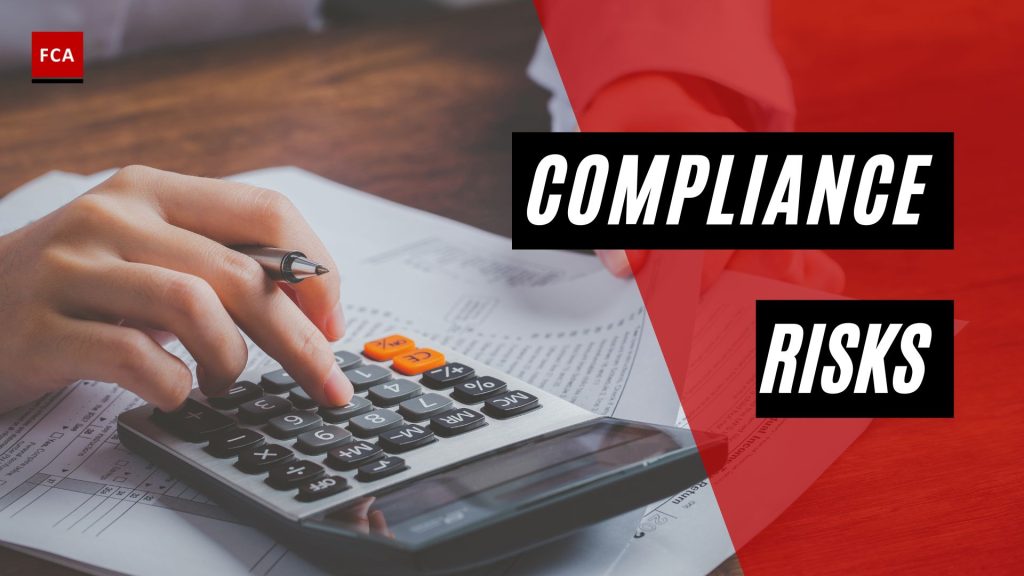Compliance risks mean the risk of non-compliance with applicable laws and regulations. Non-compliance with the provisions and requirements of such laws and regulations may lead an organization to face financial losses, reputational losses, and loss of market share. To continuously improve and strengthen the internal compliance controls system, the management regularly performs activities to identify the current and new applicable laws and regulations. The compliance controls system must support the compliance objectives of the organization and should be capable of reducing the compliance risks.
Areas and processes where significant compliance requirements are applicable are those areas where an organization establishes robust compliance controls to avoid the instances of non-compliance and regulatory inspections that may lead to investigations and penalties. These are the processes where the tolerance level is set at a very minimum or zero.
For example, an account must not be opened before the customer’s due diligence process is completed. Therefore, performing an appropriate due diligence process is a key and significant control in the account opening process.
Another process is “transactions monitoring,” where customers’ transactions are monitored regularly to identify any suspicious transactions or activity in the customers’ accounts. Due to the breach of the transaction threshold built into the AML monitoring system, investigating customers’ transactions and activities is an important control activity. Performing such a control activity is the regulatory requirement for the organization.

The Compliance Risks
Compliance risk is mostly interrelated with other categories of risks faced by the FI because it often overlaps with similar activities or sources of risks. However, to assess an accurate profile of entity-wide compliance risk assessment, the compliance risk must be measured and managed separately from other categories of risks.
Even though a single activity of a business may lead to multiple sources of risks, for example, borrower risk assessment or BBFS is a regulatory compliance requirement. It may also cover the borrower’s assessment and analysis for managing credit risk. In this example, the risks in a single activity, such as inadequate capturing of the borrower’s information via BBFS, may lead to multiple loss events. Hence, it is a source of multiple risks, such as credit risk, where there is a risk of loss of lent amount, and compliance risk, where there is a risk of regulatory penalties.
There are three broad categories in which compliance risk loss events could be categorized:
- Strategic: It would comprise loss events such as product license cancelation, which can impact the strategic operations of an FI.
- Reputational: It would damage the reputation in case of adverse media coverage or other negative news.
- Financial: These events would arise from facing financial penalties or fines levied by the regulatory authorities.
Depending on the size of the organization and the complexity of business operations, the board and management identify the applicable laws and regulations the organization must comply with. Usually, in such cases, the board and management set the tolerance level as zero to ensure that employees take the rules and regulations very seriously and comply with the applicable provisions in letter and spirit. Organizations take various measures to control the risks of non-compliance with applicable laws, rules, regulations, and standards.
For this purpose, organizations must have a systematic procedure to deal with new laws, regulations, and standards being released or an update of any existing regulation. In most cases, the new regulations or updates are a way forward. Still, in some cases, for organizations, it takes considerable time and effort to implement the changes, which gives rise to the risk of non-compliance.

Types of Organizations with Different Regulatory Requirements
There are various types of organizations to which different regulatory requirements are applicable.
For example, financial institutions are exposed to unprecedented levels of change in regulatory requirements due to the aftermath of global financial crises. No matter how stringent the regulation is, financial institutions must maintain a zero-risk appetite for compliance risk. Banks are considered the most regulated organizations where the central bank’s regulator issues various laws and regulations for the banking industry to comply with.
A few of those regulations are Anti Money Laundering Framework, Risk Management Guidelines, Customer Relationship Management Framework, Internet Banking, Branchless Banking, Data Protection regulations, etc. All these regulations are to be complied with by the bank’s management. Organizations that are doing E-Commerce businesses must ensure various rules and regulations such as GDPR compliance, National Anti-Money Laundering or AML regulations compliance, and various other types of compliances.
Final Thoughts
Compliance risks refer to a company’s potential exposure to legal penalties, financial forfeiture, and material loss as a result of failing to follow industry laws and regulations, internal policies, or prescribed best practices. Compliance risk is also referred to as integrity risk.








